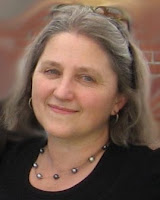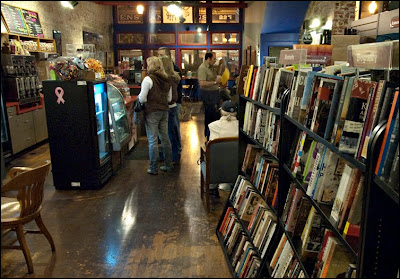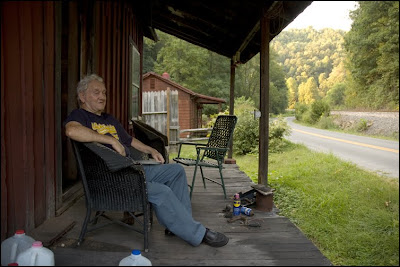I’m going off the grid for the month of December to stretch out the holidays. During that time, I’m looking forward to working my way through my immense TBR (to be read) stack of books – or at least dwindling its height. In This Light will be back in January, ready to start off the New Year refreshed and re-energized. Until then, here are some links to enjoy:
- I’ve just finished Franzen’s Freedom and don’t have much to add to what’s already been said about it. It’s an ambitious book but it fell short of the mark, and the awkward device of incorporating an autobiography by one of the main characters didn’t work for me. I liked The Corrections better, and it was due to enjoying that book that I was eager to read Freedom. Maybe I was expecting too much given all the publicity and rave reviews, and I’m certain it would not have received the same coverage had it been written by a female author. Much has been said about gender bias in publishing, including this essay in the Pittsburgh Post-Gazette by Tawni O’Dell, who was an Oprah pick for her novel Back Roads. You can also read an interview I did with O’Dell in Word Riot (originally published in 2005 in Paper Street, titled “Tawni O’Dell: The Influence of Landscape and the Journey Home”).
 I’m now about midway through Keith Richards’ Life. Sounds of Sticky Fingers and Let It Bleed fill the house to set the mood, triggering my own memories and lots of untapped writing material. If I could relive any decade, it would be the ‘70s. I’ve enjoyed many of the interviews Richards has given recently to promote his book, and was particularly interested in one about how rhythm and sound factored into the edits of the book when Richards had coauthor James Fox read the entire book aloud to him. Richards told the story to Fox, a journalist who gets full credit as coauthor and clearly knew how to prod Richards to capture those tales.
I’m now about midway through Keith Richards’ Life. Sounds of Sticky Fingers and Let It Bleed fill the house to set the mood, triggering my own memories and lots of untapped writing material. If I could relive any decade, it would be the ‘70s. I’ve enjoyed many of the interviews Richards has given recently to promote his book, and was particularly interested in one about how rhythm and sound factored into the edits of the book when Richards had coauthor James Fox read the entire book aloud to him. Richards told the story to Fox, a journalist who gets full credit as coauthor and clearly knew how to prod Richards to capture those tales.
- As inspiration in the mornings, I treat myself by listening to podcasts of writer interviews. After my morning writing is finished, I listen to a fifteen minute se
 gment as I wolf down breakfast before rushing off to my day job. Particularly enjoyable is Shelagh Shapiro’s radio show “Write the Book” which airs at WOMM-LP in Burlington, Vermont. I know Shelagh from the MFA program at Vermont College, having met her there when I was a graduate assistant and she was entering the program. Shelagh recently contributed an essay in the series “What It’s Like Living Here” at Doug Glover’s Numero Cinq blog. Doug was one of my workshop teachers at VC, and I enjoyed this interview he did with Shelagh at ‘Write the Book” in July 2010 about his book The Enamoured Knight.
gment as I wolf down breakfast before rushing off to my day job. Particularly enjoyable is Shelagh Shapiro’s radio show “Write the Book” which airs at WOMM-LP in Burlington, Vermont. I know Shelagh from the MFA program at Vermont College, having met her there when I was a graduate assistant and she was entering the program. Shelagh recently contributed an essay in the series “What It’s Like Living Here” at Doug Glover’s Numero Cinq blog. Doug was one of my workshop teachers at VC, and I enjoyed this interview he did with Shelagh at ‘Write the Book” in July 2010 about his book The Enamoured Knight.
- Hot Metal Bridge, the literary magazine published online at the University of Pittsburgh, issued the podcast “A Dialogue with Paris Review Editor
 Lorin Stein” last month. The introduction is by Chuck Kinder, and Pittsburgh Post-Gazette book review editor Bob Hoover asks some questions at the end of Stein’s talk. Stein was the editor for Kinder’s novel Honeymooners: A Cautionary Tale when it was originally published by Farrar, Straus & Giroux. Honeymooners was re-issued last fall by Carnegie Mellon University Press as part of their 2009 Classic Contemporary Series. The CMU Press edition includes “The Lost Chapters” and “The Lost Love Letters” which were cut from the original mammoth manuscript (along with the hundreds of other pages Kinder jokes about in the Hot Metal Bridge podcast mentioned above) and a new introduction by Jay McInerney. You can read more about Chuck Kinder and Diane Cecily’s long friendship with Raymond Carver here. I thoroughly enjoyed rereading this new edition of Honeymooner after catching Chuck’s reading last fall at The New Yinzer Reading Series, which was one of the best readings I’ve heard him give. I’d forgotten how wonderful and funny this book is, and I loved seeing those lost letters and chapters.
Lorin Stein” last month. The introduction is by Chuck Kinder, and Pittsburgh Post-Gazette book review editor Bob Hoover asks some questions at the end of Stein’s talk. Stein was the editor for Kinder’s novel Honeymooners: A Cautionary Tale when it was originally published by Farrar, Straus & Giroux. Honeymooners was re-issued last fall by Carnegie Mellon University Press as part of their 2009 Classic Contemporary Series. The CMU Press edition includes “The Lost Chapters” and “The Lost Love Letters” which were cut from the original mammoth manuscript (along with the hundreds of other pages Kinder jokes about in the Hot Metal Bridge podcast mentioned above) and a new introduction by Jay McInerney. You can read more about Chuck Kinder and Diane Cecily’s long friendship with Raymond Carver here. I thoroughly enjoyed rereading this new edition of Honeymooner after catching Chuck’s reading last fall at The New Yinzer Reading Series, which was one of the best readings I’ve heard him give. I’d forgotten how wonderful and funny this book is, and I loved seeing those lost letters and chapters.
- The new issue of Now & Then: The Appalachian Magazine is due out in December and includes my short-short fiction piece, “Red-winged Blackbirds at 7:35.”







































